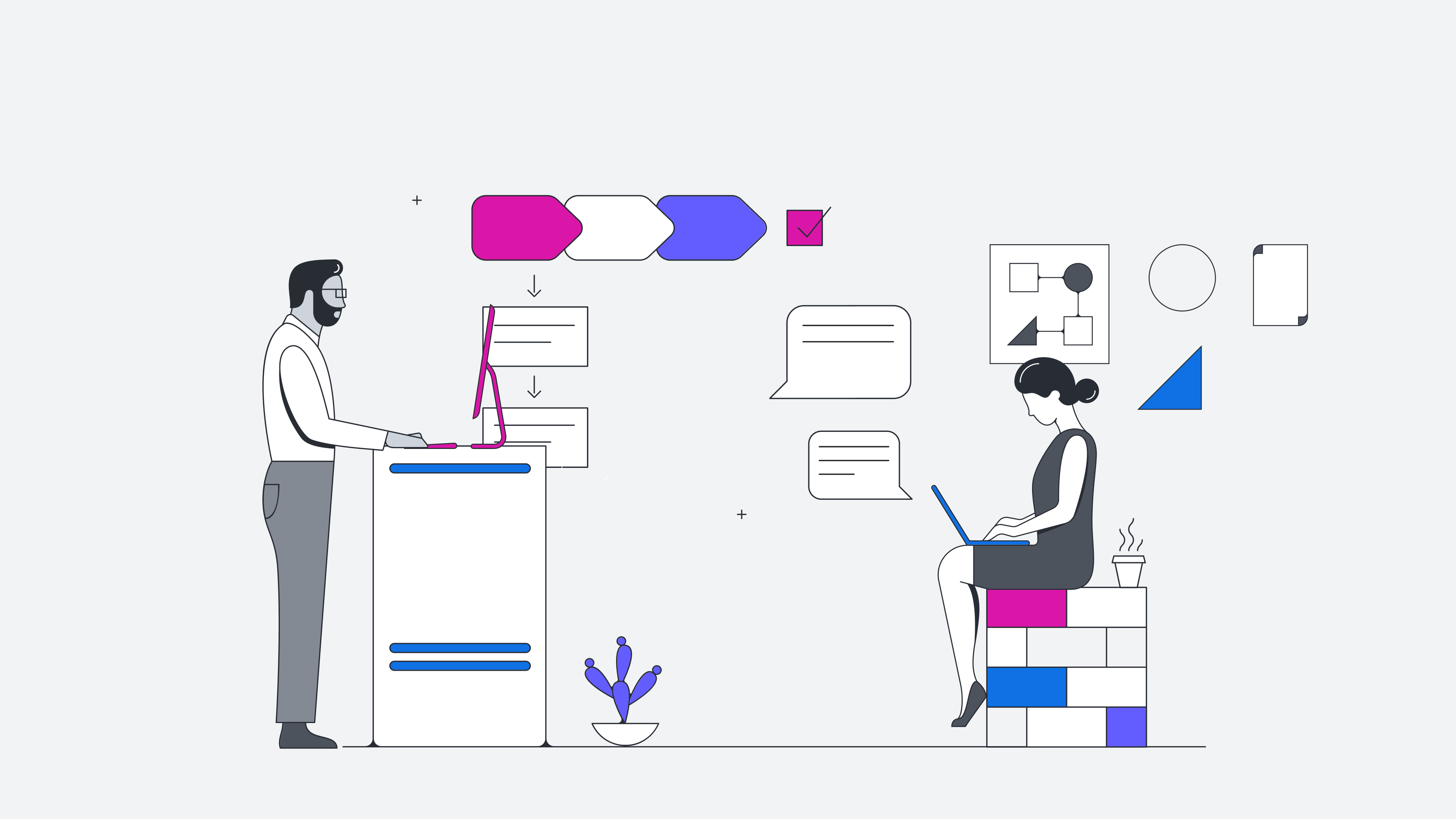
4 ways to improve collaboration with automation
Reading time: about 7 min
Topics:
On the surface, it may seem that automation and collaboration don’t belong together. After all, collaboration is about connecting people to achieve a common goal, and automation is about removing people from processes to be more efficient.
However, like many other daily job activities, collaboration has become weighed down by manual, repetitive tasks. Tasks like creating and maintaining documentation, organizing ideas, and updating stakeholders, while necessary, are time-consuming and can detract from high-value collaborative work.
Automation isn’t intended to replace the rich discussion and ideation that collaboration fosters. Quite the opposite, actually: Automation bolsters collaboration by removing mundane activities and freeing up time for more connection, deeper thinking, and collective problem-solving.
Benefits of automation in collaboration
Organizations are already recognizing the benefits of applying automation to other business functions like triggering email marketing campaigns, sending invoice reminders, or running automated software tests. When organizations extend automation to collaboration, they can further increase their competitive positioning with these benefits:
- Spend more time on strategic collaborative work. According to research by Workfellow.ai, the typical office worker spends 10% of their time on manual data entry and over 50% of work time creating or updating documents. By automating these activities, teams will have more time (and energy) for creative brainstorming and strategic planning.
- Make confident decisions together. As businesses grow increasingly complex, making sense of disconnected data, systems, and workflows can be overwhelming and stall decision-making. In fact, a McKinsey study found that most workers spend 37% of their time making decisions, and more than half of this time was thought to be spent ineffectively. Automation can clarify this complexity, providing teams with the context needed to make smart decisions and pivot course when needed.
- Improve business agility. An organization’s ability to respond quickly to customer or market changes requires continuous collaboration and team alignment. By eliminating time-consuming work and making insights more readily accessible, automation can streamline collaboration and knowledge-sharing so teams across the business can collectively adapt plans and strategies as conditions change.
- Increase and scale innovation. Innovation is often romanticized as a lightbulb moment, but by automating the repetitive parts of collaboration, you can make innovation a predictable, repeatable, and common occurrence. And when the path to innovation is transparent, employees will naturally be more engaged as they understand how their work fits into the bigger picture.
4 collaboration automation use cases
Deciding what to automate in any given scenario can be a difficult undertaking. We’ve identified some of the most time-consuming parts of collaboration that, when automated, boost your team’s creativity, productivity, and agility.
1: Synthesizing ideas after a brainstorming session
It’s a familiar scenario: You and your team are planning an upcoming project and generate tons of creative ideas together—none of which see the light of day. Oftentimes, innovative ideas and unique perspectives fall to the wayside because teams have no way to organize, analyze, or prioritize these ideas. And attempting to make sense of ideas manually can be a laborious process, especially for large brainstorms.
What to automate: To ensure the best ideas are brought to life, you can automatically categorize and sort ideas. This type of automation identifies common themes across ideas in seconds, making it a great way to quickly spot trends among large brainstorms.
If you’re really looking to automate, consider utilizing Lucidspark's Collaborative AI feature. Collaborative AI supercharges your brainstorming sessions by generating more ideas, quickly, then automatically capturing the big picture by sorting and summarizing those ideas. In seconds, Collaborative AI will help you name and iterate common themes evident in your ideas, and then provide you with a list of action items so you can easily take the next steps.
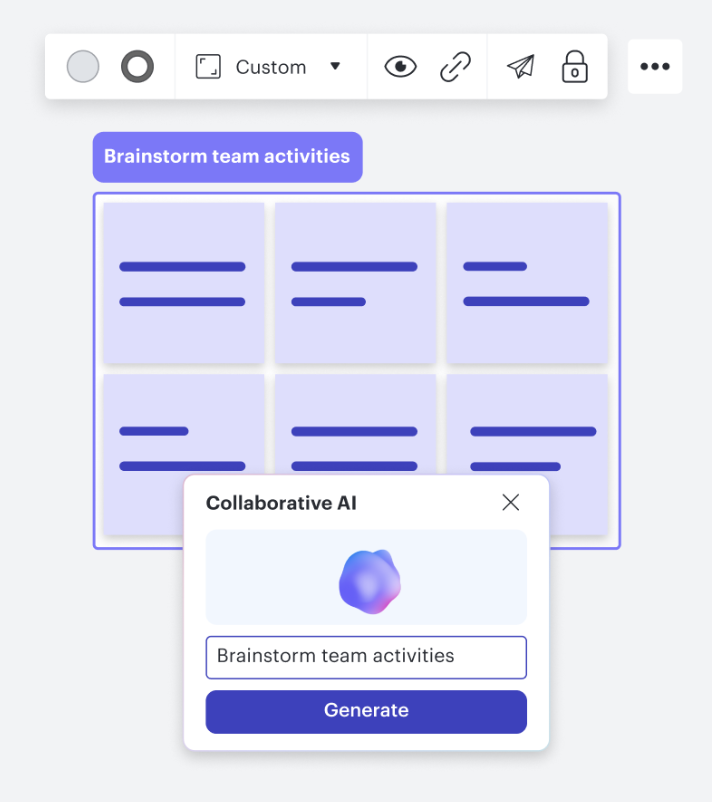
2. Building diagrams to communicate complex information
Whether you’re building org charts, account maps, or ERDs, diagrams are an effective way to collectively visualize systems, processes, and connections. They’re often a launching point for discussion, helping teams and stakeholders reach a shared understanding of the current state and identify areas for improvement.
But the process of creating these diagrams isn’t always easy. It often requires manual data input, which is time-consuming and prone to error. Not to mention, you have to regularly update and maintain these diagrams for them to stay useful.
What to automate: Automation can be a huge time-saver when it comes to building out data-driven diagrams. By automatically importing data directly from where it lives—whether that’s Microsoft Excel, Google Sheets, Salesforce, BambooHR, or another system of record—into the platform you collaborate in, you can create diagrams nearly instantaneously.
Best yet, when the data is linked between your collaboration platform, such as Lucid, and the original source, you can ensure your diagrams always reflect the most up-to-date information. No upkeep needed!
Want to take automation a step further in diagramming? Lucidchart includes a generate diagram feature that allows you to auto-generate a flowchart, sequence diagram, or class diagram by typing in a prompt.
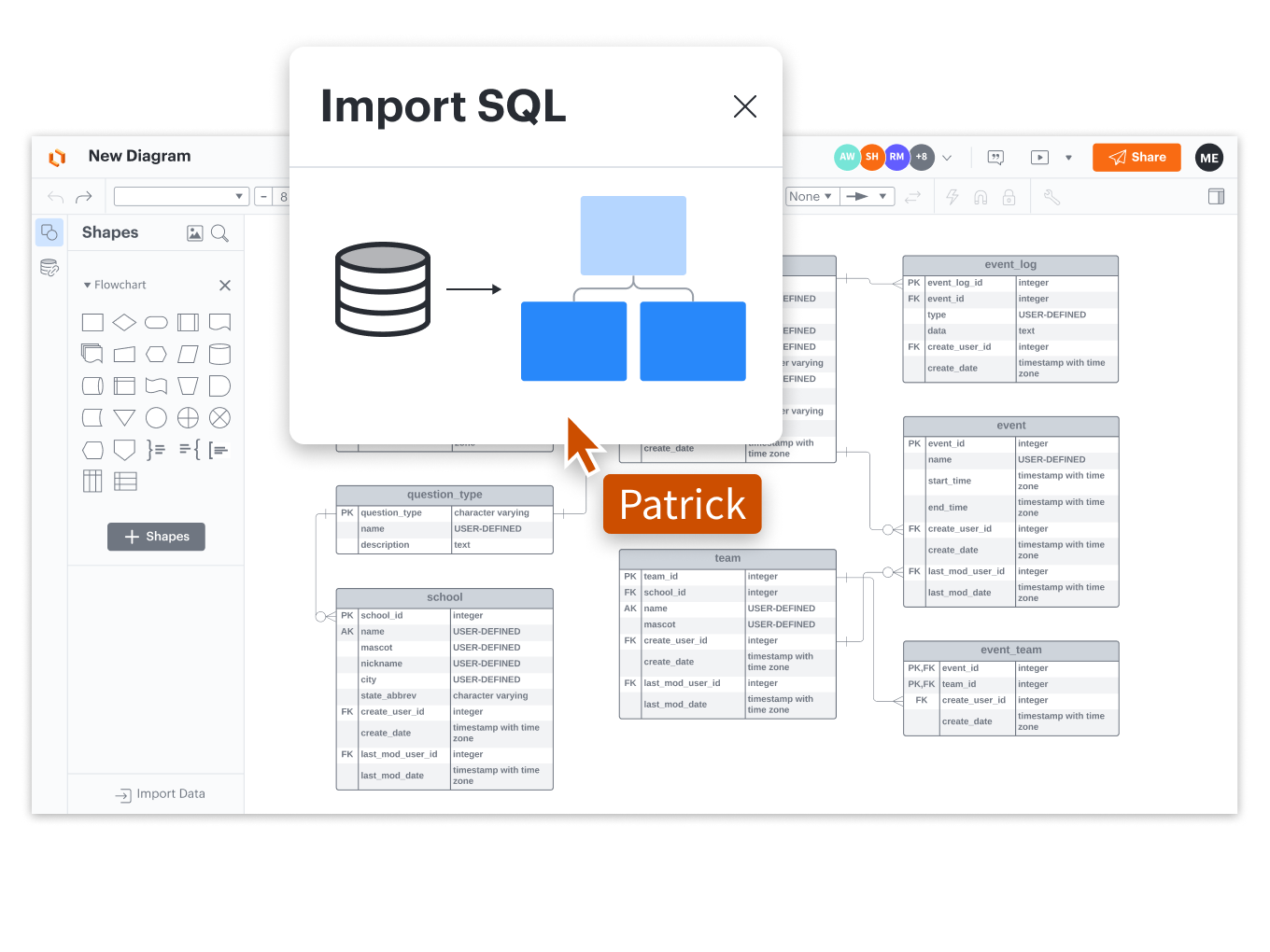
3. Interpreting data to make informed decisions
Creating diagrams is only half the battle—next comes the challenge of interpreting the information in the diagrams. To make informed decisions, it’s important to be able to glean insights from a diagram at a glance, whether that’s understanding the status or progress of a project, organization reporting structures, or what types of instances exist in a network.
Interpreting diagrams manually is not only inefficient but also leaves room for misinterpretation, increasing the risk of misalignment in teams and delayed decision-making.
What to automate: To quickly identify priority information, you can apply custom rules to your diagrams. This type of automation could mean triggering a certain color, shape, or icon when data meets predetermined criteria. For example, if you want to quickly see in your org chart which employees are up for compensation review, you may decide to apply a rule to your diagram that automatically triggers a warning icon if an employee has been in a role longer than a specified time frame.
By applying automated conditional formatting to your diagrams in this way, you’ll have the information at your fingertips to alert stakeholders to priority items and make key decisions around hiring, budgeting, or strategy.
In Lucidchart, you can also use the Collaborative AI summarize feature to quickly get a summary of the information conveyed in your diagram.
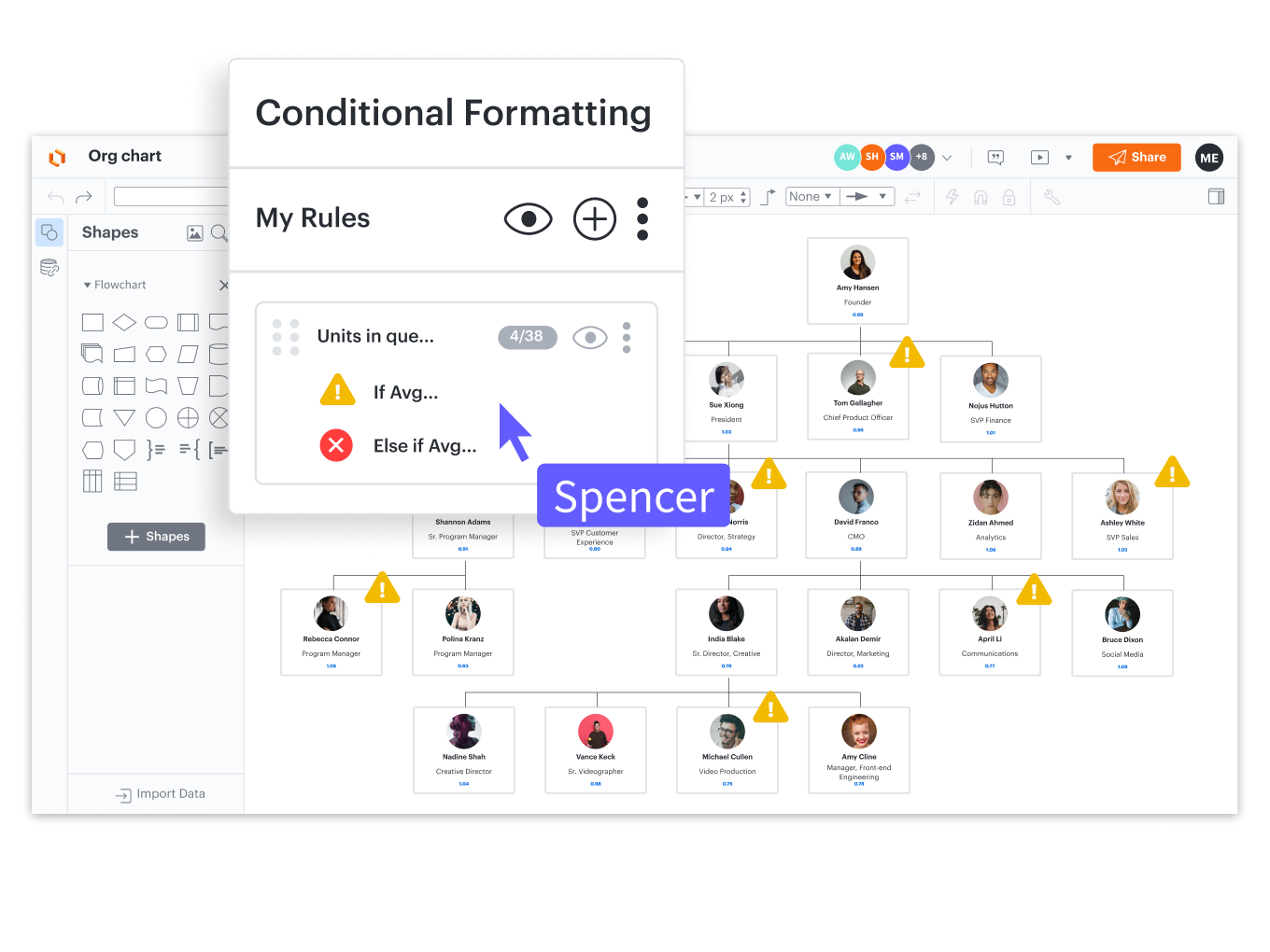
4. Keeping teams aligned on project plans
Staying aligned with cross-functional team members throughout the course of a project can be tricky, especially as timelines and priorities shift. And if teams are working remotely, it’s even more difficult to ensure everyone is heading towards the same deadlines and goals.
Many teams are already collaboratively building out project plans, determining timelines, and assigning accountabilities. The problems occur in reflecting this information accurately in all the different tools teams use. Manually transferring this information between tools and keeping it updated as projects progress is inefficient and can lead to miscommunication.
What to automate: To keep momentum and stay aligned, teams need a way to automatically transfer project information from a collaborative platform into the project management tool of their choice, like Smartsheet, Jira, or Asana. Teams can stay aligned continuously with a two-way integration between the tools so that if the information is updated in one source, it automatically reflects the updated information in the other source.
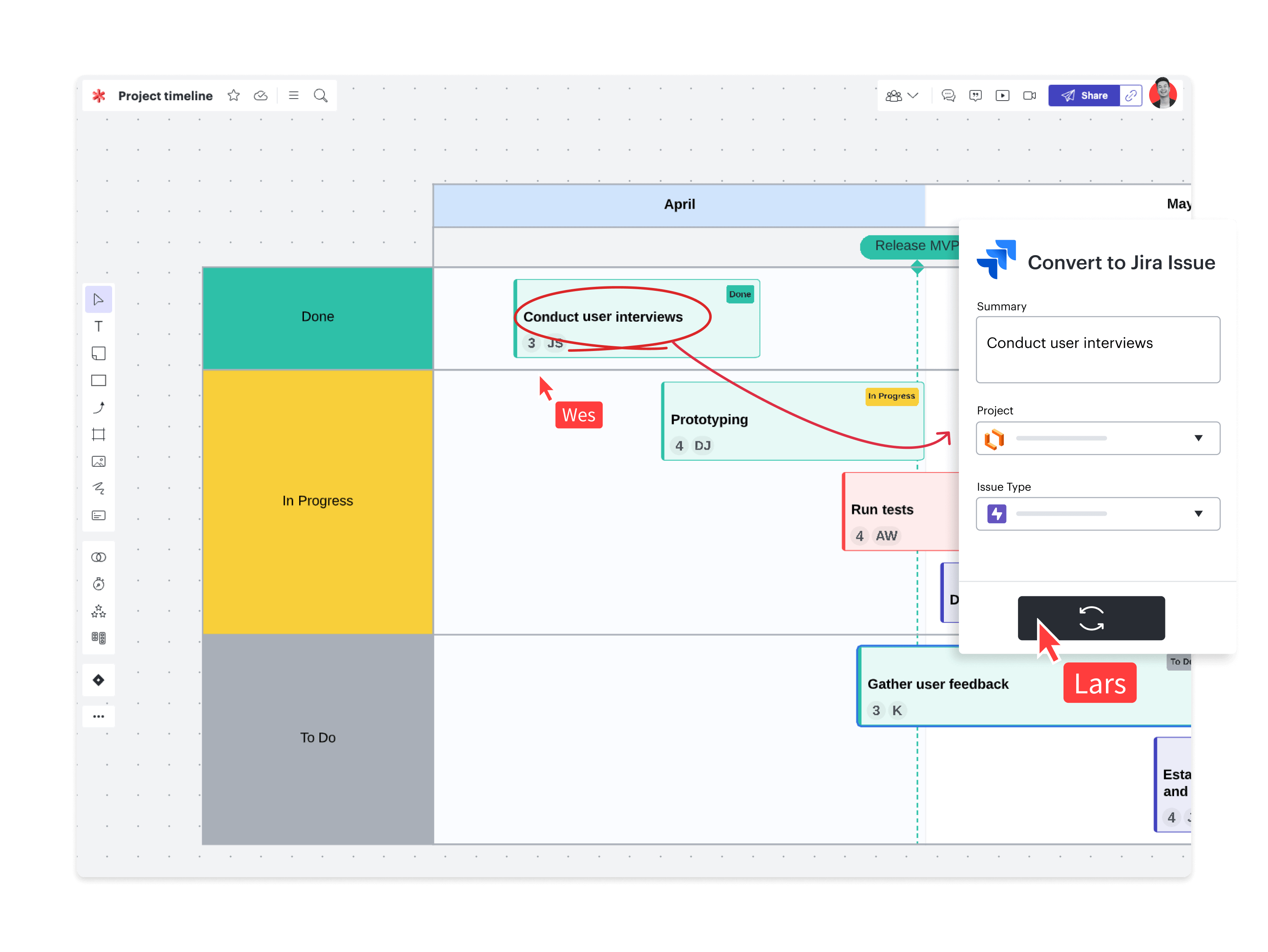
How to make collaboration automation a reality
In order to effectively automate collaboration’s repetitive activities, you’ll need the right technology. One of the most efficient ways to automate these tasks is through a comprehensive visual collaboration solution that already includes this built-in intelligence.
And when all visual collaboration activities take place in the same platform—from the highly collaborative brainstorming, workshopping, and planning to the automated synthesis, data analysis, and status updates—you’ll organically create a living blueprint of how your business works.
Be sure to evaluate visual collaboration solutions carefully, as many lack the robust automation capabilities needed to synthesize ideas or visualize data. By choosing a visual collaboration solution that prioritizes both connection and efficiency, you’ll be able to boost your team’s collaboration across use cases and set your organization apart from the competition.
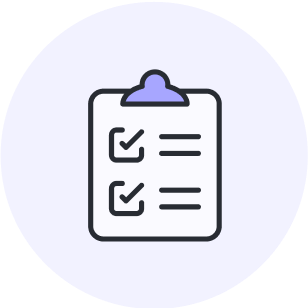
Learn what to look for in a visual collaboration solution.
Get the guideAbout Lucid
Lucid Software is the leader in visual collaboration and work acceleration, helping teams see and build the future by turning ideas into reality. Its products include the Lucid Visual Collaboration Suite (Lucidchart and Lucidspark) and airfocus. The Lucid Visual Collaboration Suite, combined with powerful accelerators for business agility, cloud, and process transformation, empowers organizations to streamline work, foster alignment, and drive business transformation at scale. airfocus, an AI-powered product management and roadmapping platform, extends these capabilities by helping teams prioritize work, define product strategy, and align execution with business goals. The most used work acceleration platform by the Fortune 500, Lucid's solutions are trusted by more than 100 million users across enterprises worldwide, including Google, GE, and NBC Universal. Lucid partners with leaders such as Google, Atlassian, and Microsoft, and has received numerous awards for its products, growth, and workplace culture.
Related articles
Rethinking the meeting mindset: How to decide if you actually need a meeting
Use these guidelines to reduce costly meetings, improve efficiency, and boost collaboration across your organization.
Asynchronous collaboration tips from 4 organizations making it happen
Check out these experts’ proven tips for working more efficiently and effectively through asynchronous collaboration.
The problems with workplace collaboration today—and how to fix them
Uncover the top collaboration problems that organizations can't ignore any longer in this blog by Nathan Rawlins, Lucid CMO.
How to set up your team hub and team space to maximize collaboration
Get tips on how to centralize resources, coordinate progress, and keep your team aligned continuously with team hubs and team spaces.
